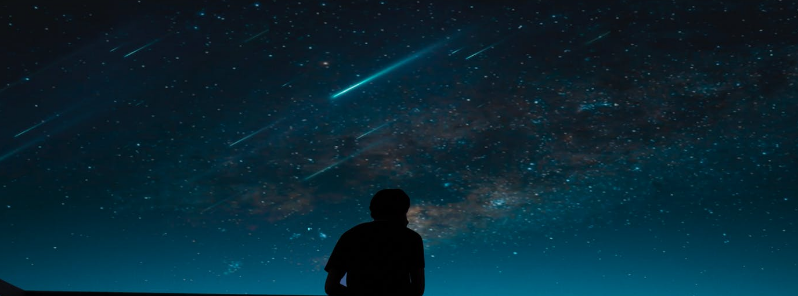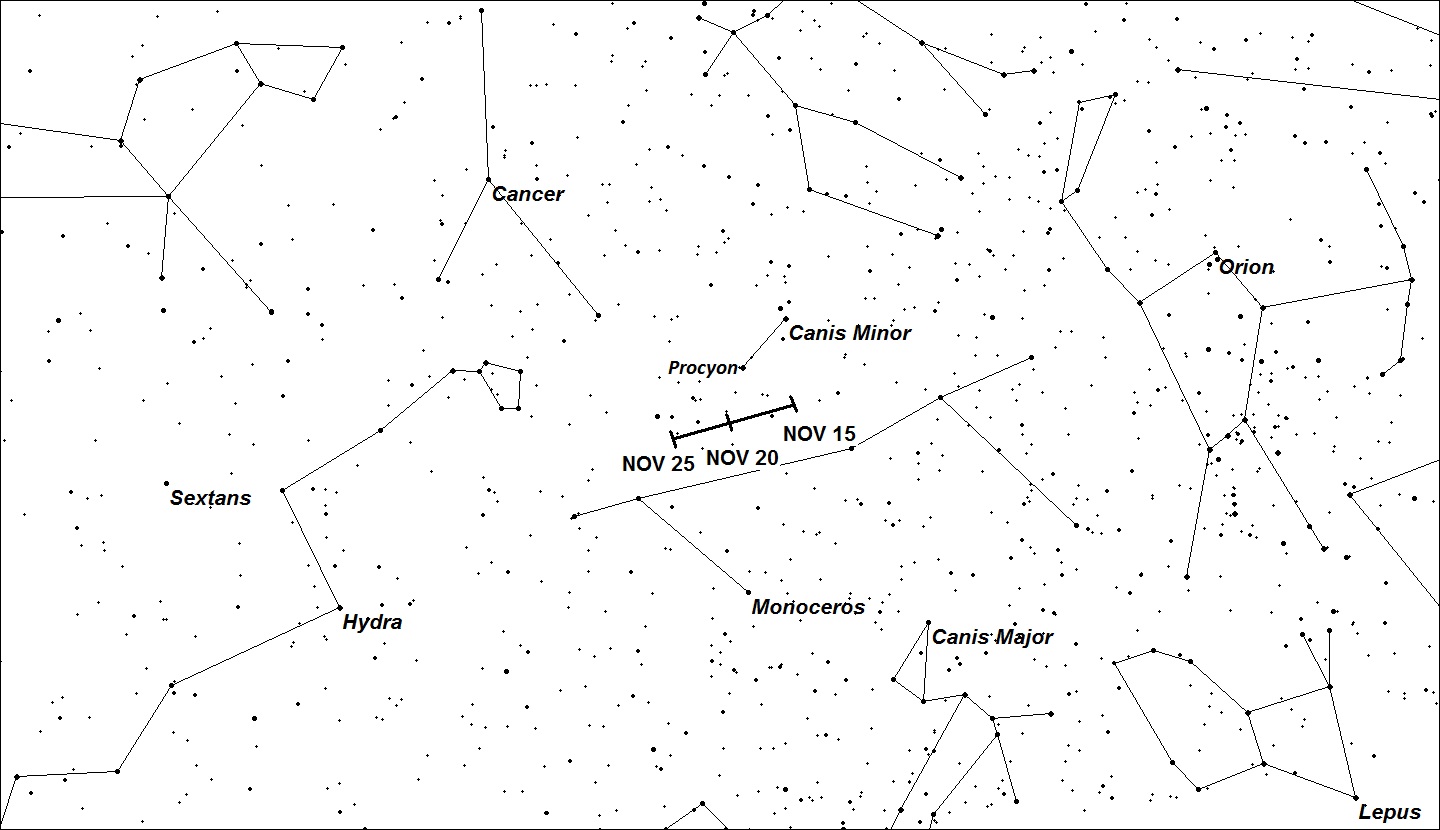Meteor storm predicted for November 22

An outburst of alpha Monocerotid meteor shower is predicted to occur at around 04:50 UTC on November 22, 2019. While the source of this meteor shower is an unknown long-period comet, the 2019 outburst prediction is coming from well-known meteor scientists Esko Lyytinen and Peter Jenniskens so there's a pretty good chance we'll see it.
The alpha Monocerotid is a meteor shower active each year from November 15 to 25, with a peak taking place on the 21st or 22nd. The speed of its meteors is 65 km/s.
This shower normally has a low Zenithal Hourly Rate (ZHR), but every now and then, it triggers an outburst, and its hourly meteor rates shoot up from hundreds to thousands.
Such outbursts were observed in 1925, 1935, 1985, and 1995, with the 1925 and 1935 storms both passing 1 000 ZHR.
These figures depend on how clear the sky would be, "because the radiant is not very high and also because of the possible twilight, the actual counts will be of course well below this level," Lyytinen and Jenniskens explained.
The outburst is predicted to occur near 04:50 UTC on November 22, favoring western Europe and northwestern Africa as the best locations to view the outburst. The moon will only 20% illuminated.
"Observers are encouraged to start viewing the sky at least an hour before the predicted time of maximum activity in case the timing estimates are in error," Robert Lunsford of the American Meteor Society notes.
"Do not stand and observe, rather use a comfortable lounge chair with plenty of blankets to keep warm. It would be best to face toward the star Procyon so that you can differentiate meteors from the alpha Monocerotids versus other sources. There will be 5-10 random meteors visible per hour while you try and witness any alpha Monocerotids. These random meteors will have all ranges of velocity and lengths.
"If you face toward Procyon then any alpha Monocerotids seen near this bright star will be short and slow. Those seen further away will be swift and longer but they will all trace backward toward Procyon. If the moon is above the horizon from your location then move your view more toward the west to keep it out of your field of view."

Location of the alpha Monocerotid radiant. Image credit: Southern Star Systems
The Alpha Monocerotids appear to radiate from the constellation Monoceros– a Greek word which means unicorn. But according to the American Meteor Society, the 1995 outburst showed that the radiant lies within the borders of Canis Minor constellation, near the Procyon star.
Peter Jenniskens predicted the 1995 return based on the hypothesis that these outbursts were caused by the dust trail of a long period comet occasionally wandering in Earth's path due to planetary perturbations. During observations in southern Spain, assisted by a team of observers of the Dutch Meteor Society, Jenniskens confirmed that the meteoroids were moving in a long-period comet orbit.
The outburst of 1995 allowed researchers to determine the exact radiant of the swarm and the solar longitude of its peak as well as to confirm the brevity of Alpha Monocerotids outbursts as less than one hour.
One of the most prolific meteor storms in history occurred on November 17, 1966, when observers saw as many as 40 meteors per second or a staggering number of 144 000 per hour.
Featured image credit: raman deep/Pexels

Commenting rules and guidelines
We value the thoughts and opinions of our readers and welcome healthy discussions on our website. In order to maintain a respectful and positive community, we ask that all commenters follow these rules.